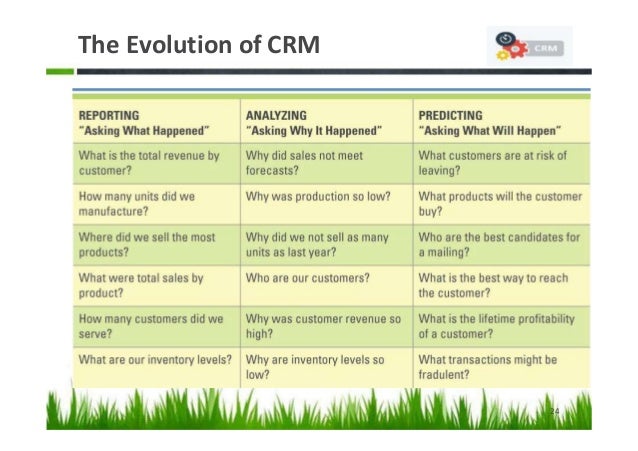CRM enables an organization to;
- Provide better customer service
- Make call centers more efficient
- Cross sell products more effectively
- Helps sales staff close deals faster
- Simplify marketing and sales processes
- Discover new customers
- Increase customer revenues
➤ RECENCY, FREQUENCY AND MONETARY VALUE
An organization can their most valuable customers by using a formula RFM :
- How recently a customer purchased items (Recency)
- How frequently a customer purchased items (Frequency)
- How much a customer speeds on each purchased (Monetary Value)
➤ THE EVOLUTION OF CRM
- CRM reporting technologies - help organizations identify their customers across other applications.
- CRM analysis technologies - help organizations segment their customers into categories such as best and worst customers.
- CRM predicting technologies - help organizations predict customer behavior, such as which customers are at risk of leaving.

➤ THE UGLY SIDE OF CRM

➤ CRM EXPLOSIVE GROWTH

➤ USING ANALYTICAL CRM TO ENHANCE DECISION
- Operational CRM – supports traditional transactional processing for day-to-day front-office operations or systems that deal directly with the customers.
- Analytical CRM – supports back-office operations and strategic analysis and includes all system that do not deal directly with the customers

➤ CRM SUCCESS FACTORS
- Clearly communicate the CRM strategy
- Define information needs and flows
- Build an integrated view of the customer
- Implement in iterations
- Scalability for organizational growth
No comments:
Post a Comment